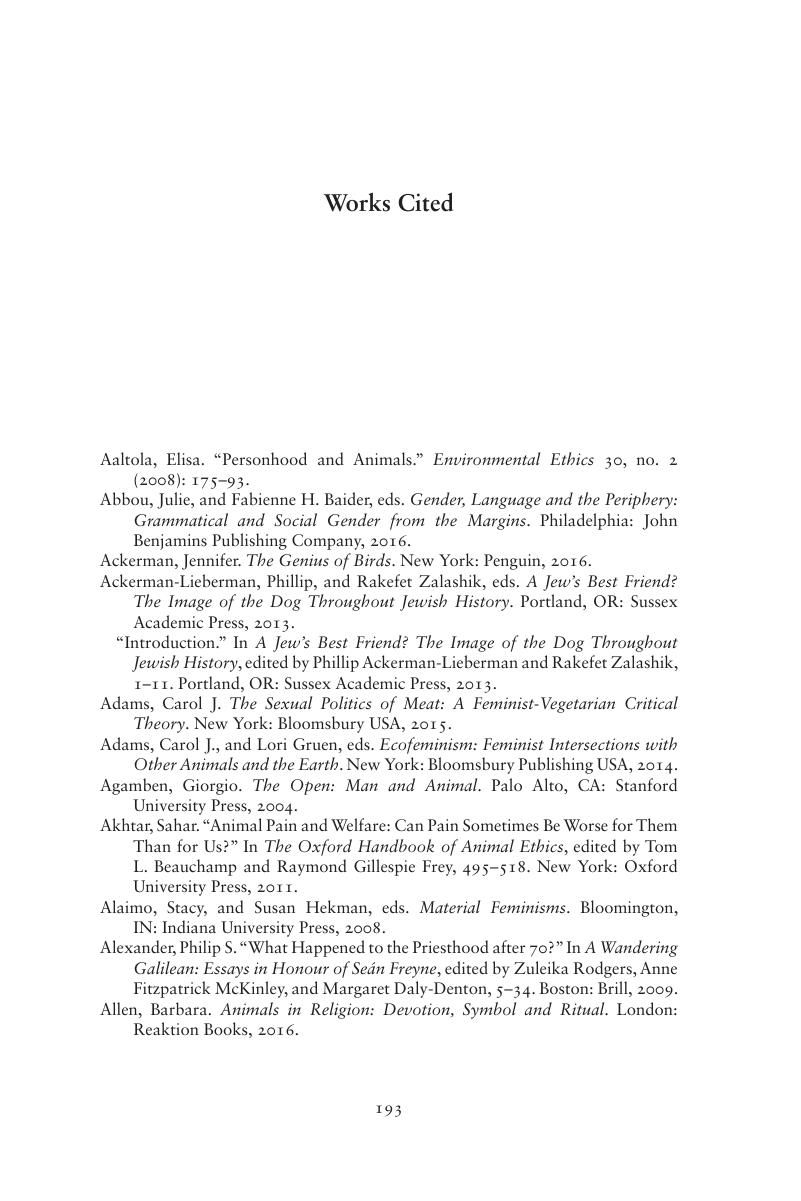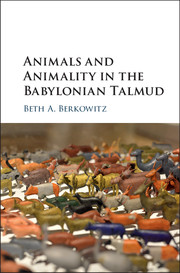Book contents
- Animals and Animality in the Babylonian Talmud
- Animals and Animality in the Babylonian Talmud
- Copyright page
- Contents
- Acknowledgments
- 1 Introduction
- Orientation to the Babylonian Talmud
- 2 Animal Intelligence
- 3 Animal Morality
- 4 Animal Suffering
- 5 Animal Danger
- 6 Animals as Livestock
- 7 Conclusion
- Works Cited
- Index
- References
Works Cited
Published online by Cambridge University Press: 03 May 2018
- Animals and Animality in the Babylonian Talmud
- Animals and Animality in the Babylonian Talmud
- Copyright page
- Contents
- Acknowledgments
- 1 Introduction
- Orientation to the Babylonian Talmud
- 2 Animal Intelligence
- 3 Animal Morality
- 4 Animal Suffering
- 5 Animal Danger
- 6 Animals as Livestock
- 7 Conclusion
- Works Cited
- Index
- References
Summary

- Type
- Chapter
- Information
- Animals and Animality in the Babylonian Talmud , pp. 193 - 220Publisher: Cambridge University PressPrint publication year: 2018



